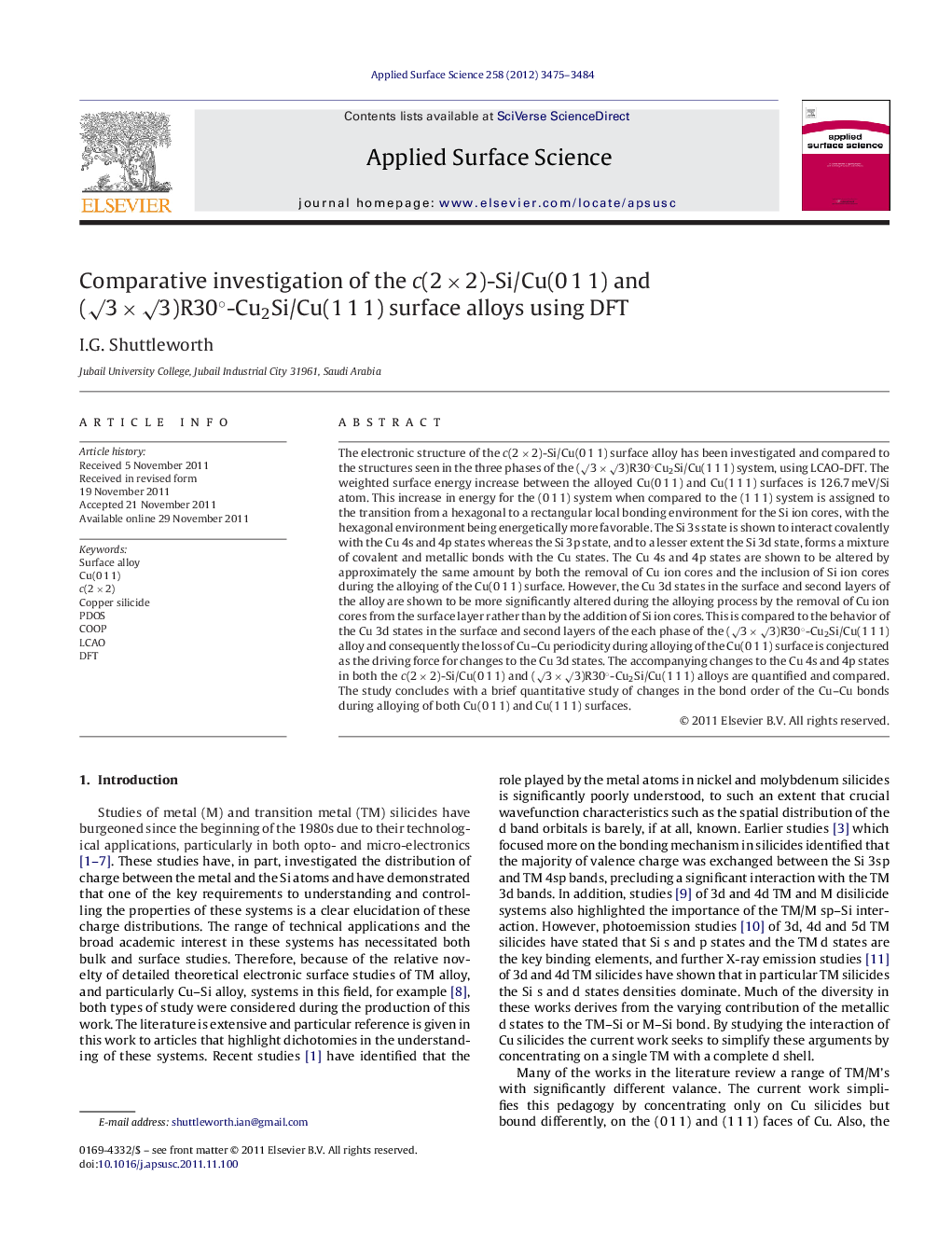| کد مقاله | کد نشریه | سال انتشار | مقاله انگلیسی | نسخه تمام متن |
|---|---|---|---|---|
| 5361224 | 1388271 | 2012 | 10 صفحه PDF | دانلود رایگان |

The electronic structure of the c(2 Ã 2)-Si/Cu(0 1 1) surface alloy has been investigated and compared to the structures seen in the three phases of the (â3 Ã â3)R30°Cu2Si/Cu(1 1 1) system, using LCAO-DFT. The weighted surface energy increase between the alloyed Cu(0 1 1) and Cu(1 1 1) surfaces is 126.7 meV/Si atom. This increase in energy for the (0 1 1) system when compared to the (1 1 1) system is assigned to the transition from a hexagonal to a rectangular local bonding environment for the Si ion cores, with the hexagonal environment being energetically more favorable. The Si 3s state is shown to interact covalently with the Cu 4s and 4p states whereas the Si 3p state, and to a lesser extent the Si 3d state, forms a mixture of covalent and metallic bonds with the Cu states. The Cu 4s and 4p states are shown to be altered by approximately the same amount by both the removal of Cu ion cores and the inclusion of Si ion cores during the alloying of the Cu(0 1 1) surface. However, the Cu 3d states in the surface and second layers of the alloy are shown to be more significantly altered during the alloying process by the removal of Cu ion cores from the surface layer rather than by the addition of Si ion cores. This is compared to the behavior of the Cu 3d states in the surface and second layers of the each phase of the (â3 Ã â3)R30°-Cu2Si/Cu(1 1 1) alloy and consequently the loss of Cu-Cu periodicity during alloying of the Cu(0 1 1) surface is conjectured as the driving force for changes to the Cu 3d states. The accompanying changes to the Cu 4s and 4p states in both the c(2 Ã 2)-Si/Cu(0 1 1) and (â3 Ã â3)R30°-Cu2Si/Cu(1 1 1) alloys are quantified and compared. The study concludes with a brief quantitative study of changes in the bond order of the Cu-Cu bonds during alloying of both Cu(0 1 1) and Cu(1 1 1) surfaces.
⺠Energetic arguments show that Si ions drive their local bonding towards hexagonal (1 1 1) rather than rectangular (0 1 1) co-ordinations. ⺠The c(2 Ã 2)-Si/Cu(0 1 1) contains significant Cu 3d charge density rearrangements in the surface and second layers due to the lowering of surface Cu periodicity during alloying.
Journal: Applied Surface Science - Volume 258, Issue 8, 1 February 2012, Pages 3475-3484